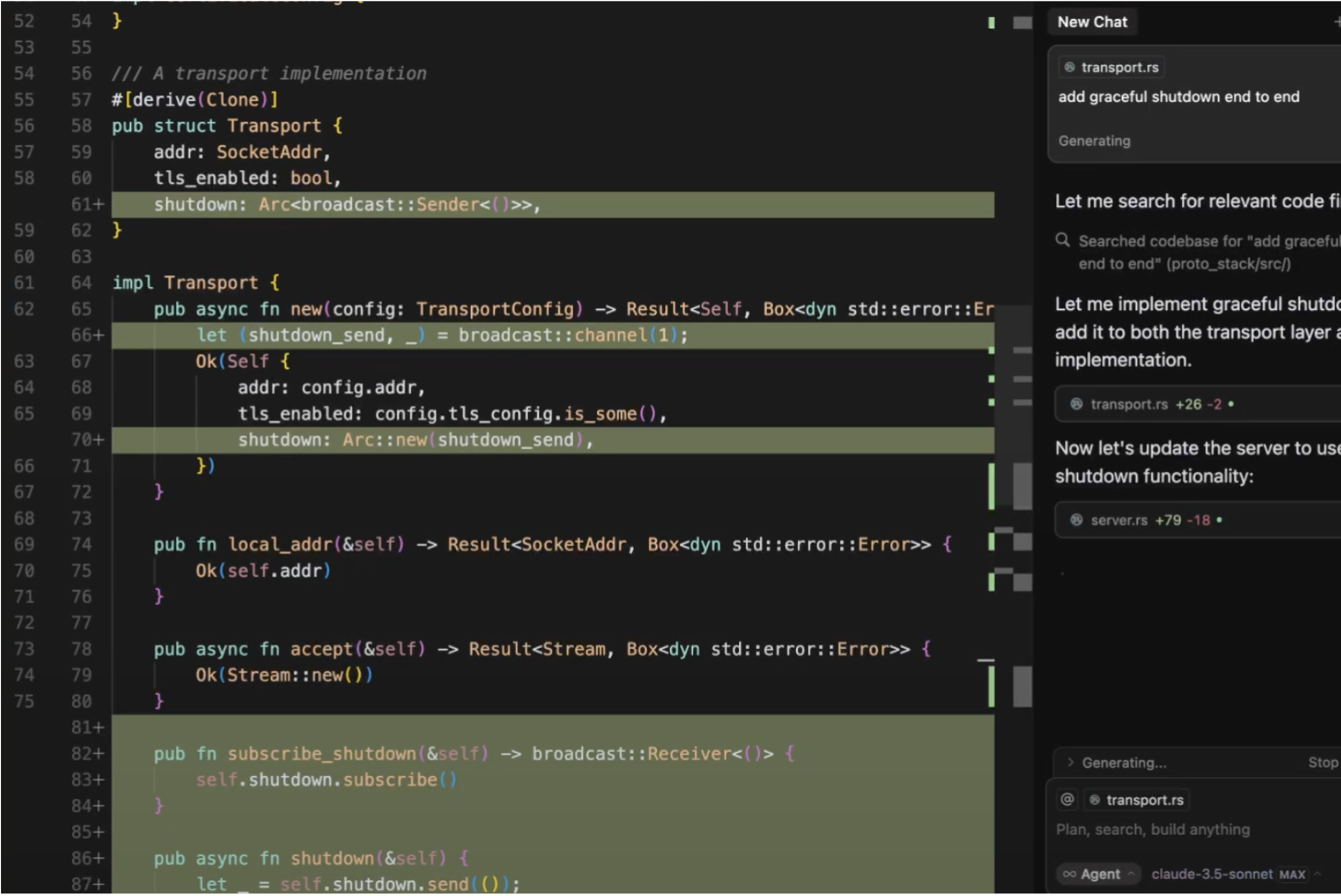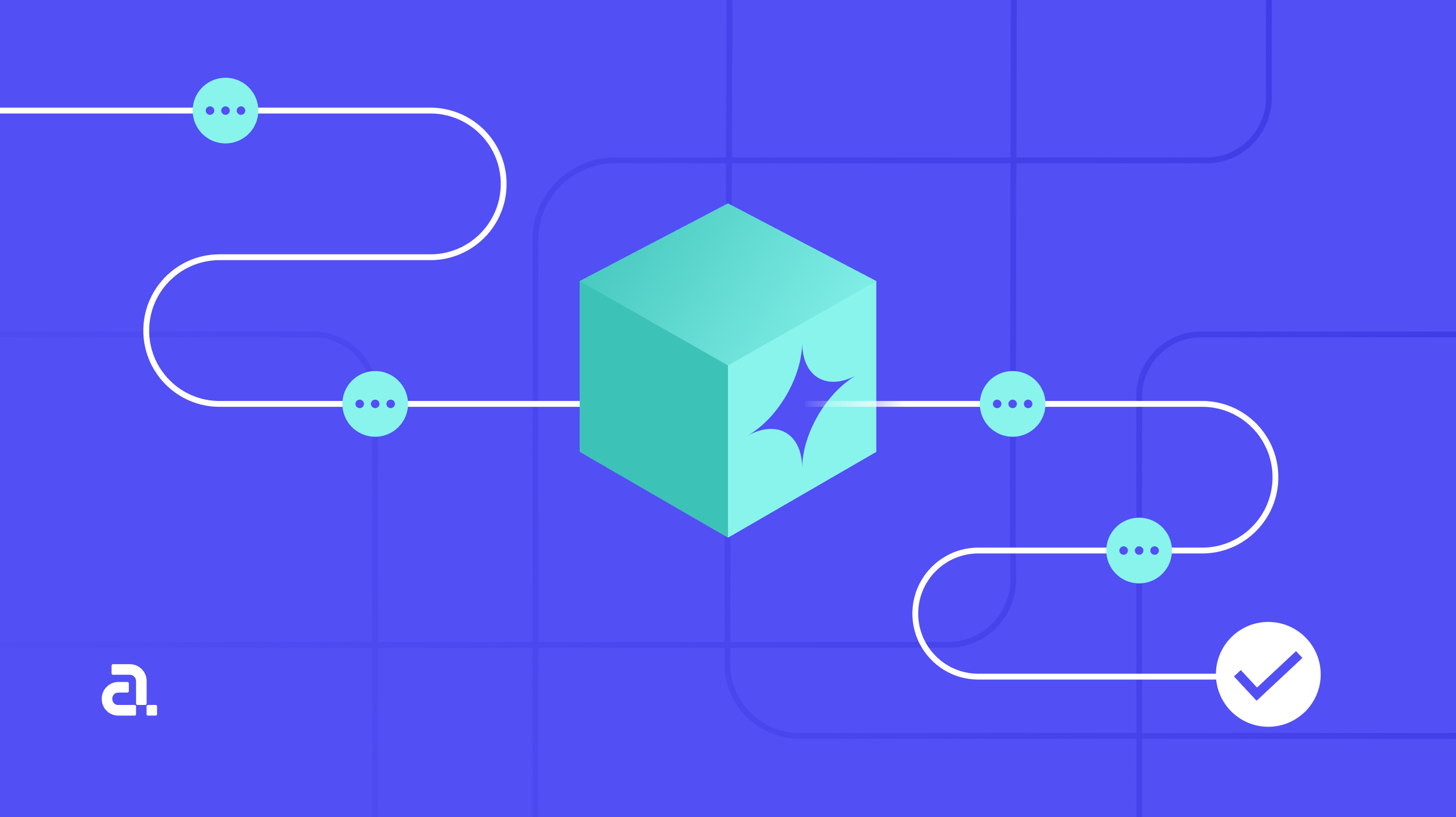The product development landscape is experiencing a seismic shift. What once took months of market research, design iterations, manual development, and user testing can now be accelerated and enhanced through the use of artificial intelligence. AI is increasing productivity by up to 40% across industries, streamlining workflows and accelerating product development cycles.
The companies thriving today are those that have recognized AI as more than an automation tool. For example, according to Gartner, 70% of software development teams are expected to integrate AI-based coding assistants, such as GitHub Copilot, by 2026, aiming to accelerate development speed and improve code quality.
This fundamental shift is creating new possibilities for speed, quality, and market responsiveness that were unimaginable just a few years ago. In this blog, we will examine how AI-driven product innovation is transforming the core of software development processes and outcomes.
The three pillars of AI-driven product innovation
To understand how AI fundamentally transforms product development, it's essential to examine the three core areas where this technology creates the most significant impact. These pillars represent the foundation upon which modern, competitive product development strategies are built.
Data-driven product decisions
Traditional market research, while valuable, often provides a limited snapshot of user preferences and market conditions. AI-powered research tools can analyze massive datasets continuously (social media conversations, product reviews, industry reports, competitor activities), and create emerging trend signals.

AI can identify emerging user needs before they become mainstream demands, predict which features will drive adoption, and highlight market gaps that represent untapped opportunities. Product teams armed with these insights can make strategic decisions with unprecedented confidence.
The impact extends beyond initial ideation. Throughout the development process, AI continues to refine its understanding of user preferences, market conditions, and competitive dynamics. This ongoing intelligence allows teams to adjust product strategies in real-time, ensuring that by launch, products are precisely aligned with market demands.
AI-assisted product design and development
Traditional product development often relies on team experience and sequential processes that can sometimes slow down innovation. AI transforms this by acting as a collaborator that enhances creativity and speeds up design, development, testing, and collaboration.
AI design tools like Bolt and Lovable help quickly generate prototypes, user flows, and interactive elements, thereby streamlining the design process. Coding tools like GitHub Copilot and Cursor enhance development speed and improve code quality and consistency by offering intelligent code suggestions and automating repetitive tasks.
AI-powered usability tools, such as Maze and Lookback, offer valuable insights into user behavior, enabling teams to identify and address usability issues early. AI testing tools like Testim and Applitools automate quality assurance by running tests across platforms to detect bugs and performance issues more quickly.
This collaborative approach means product teams can explore broader solution spaces while maintaining focus on user needs and business goals. The result is products that reach the market faster while incorporating more innovative features and better addressing customer requirements. In an environment where time-to-market can determine market leadership, this AI-human partnership provides a decisive competitive advantage.
Harnessing AI for continuous growth
Perhaps the most revolutionary aspect of AI-driven product development is its ability to extend intelligence beyond the launch date. Traditional products are often static after release, requiring major updates or new versions to incorporate improvements. AI enables continuous product evolution through real-time data analysis and automated optimization, allowing for seamless updates and enhancements.
Post-launch AI systems monitor user behavior, analyze feedback patterns, and identify performance metrics that indicate areas for improvement. This creates a feedback loop where products continuously refine themselves based on actual usage data. Features can be optimized, user interfaces can be adjusted, and new capabilities can be introduced based on emerging user patterns.
This continuous evolution model ensures products remain competitive and relevant in rapidly changing markets. Instead of waiting for scheduled update cycles, products can adapt dynamically to user needs and market conditions, maintaining their value proposition over extended periods.
Practical AI use cases across development stages
The versatility of AI in product development becomes clear when examining specific use cases across different stages of the product lifecycle. These applications demonstrate how AI transforms hidden opportunities into tangible business outcomes:
Product strategy
Effectively implementing AI in strategic planning can lead to a 20-25% improvement in forecasting accuracy.
AI-powered market intelligence platforms continuously monitor competitor activities, patent filings, and industry publications to identify emerging trends and potential disruptions. Natural language processing algorithms scan thousands of industry reports and news articles daily, extracting strategic insights about market opportunities and threats.
This intelligence enables product teams to make informed decisions about feature prioritization, technology investments, and market positioning. By processing vast amounts of competitive data, AI helps teams identify white space opportunities and avoid saturated market segments, significantly improving the probability of successful product launches.
User research and strategy
AI is transforming how product teams conduct user research and shape strategy by offering deeper insights into user needs, behaviors, and preferences. Advanced AI tools can analyze vast amounts of qualitative and quantitative data, including user surveys, interview transcripts, and usability testing, to identify key themes and pain points.
AI-powered tools such as Dovetail and UserZoom allow product teams to efficiently synthesize data from interviews and feedback sessions, uncovering hidden patterns that inform product decisions. AI also enhances user segmentation by going beyond basic demographic data, enabling teams to build more nuanced user personas based on behavioral insights, sentiment analysis, and engagement metrics.
Furthermore, AI assists in strategy development by predicting user trends and needs, allowing teams to stay ahead of the competition. By analyzing user interactions across various touchpoints, AI can identify unmet needs and provide recommendations for new features or improvements. This predictive approach empowers product teams to prioritize efforts that will have the most impact on user satisfaction and retention.
UI/UX Design
Design is no longer a linear process of wireframing and user testing followed by iteration. AI is reshaping UI and UX design through intelligent co-creation, enabling teams to generate, validate, and refine experiences at speed and scale.
AI-assisted design tools like Uizard and Figma AI can generate design mockups from text prompts, translate low-fidelity wireframes into interactive prototypes, and offer suggestions to improve usability in real time. These platforms significantly reduce the time it takes to move from concept to testable design, allowing teams to explore a broader range of solutions faster.
Emerging tools in vibe design and vibe coding like Diagram’s Genius are taking things a step further. They understand the intended "feel" or emotional tone of a product experience and adjust visual layouts, colors, microinteractions, and even frontend code accordingly. This ensures brand consistency and intuitive user journeys without requiring constant design-developer back-and-forth.
According to McKinsey, companies that integrate AI into their design processes report a 20–30% increase in user satisfaction scores and a 30–40% reduction in design-to-development time. With AI, product teams can now iterate based on live user interaction data, test multiple variations simultaneously, and ensure accessibility and performance standards are met without manual review.
By blending human creativity with machine precision, AI-enabled design tools empower teams to build interfaces that are not only beautiful but also measurably effective.
Product development

AI has a profound impact on the actual development of products, from the first line of code to system-level architecture decisions. What used to require weeks of development effort can now be accomplished in a fraction of the time with AI-assisted engineering tools that augment human capabilities. According to internal GitHub studies, developers using Copilot report a 55% increase in coding speed and a significant reduction in mental fatigue during complex tasks.
AI-driven coding tools enable software engineers to write and debug code more efficiently, allowing teams to focus on more complex problem-solving and feature development.
In collaborative environments, AI bridges the communication gaps between design, engineering, and product development. Platforms like Sourcery and Cursor act as real-time copilots during cross-functional collaboration, translating business logic into technical specs or design elements into responsive code. This reduces friction between stages of development and accelerates iteration cycles.
Ultimately, AI is empowering engineers to work smarter. It minimizes guesswork, increases consistency, and brings greater agility to development workflows. For companies racing to launch, the ability to build robust, scalable, and maintainable software faster than competitors is no longer a nice-to-have—it’s a survival skill.
Quality assurance
Automated testing powered by AI goes beyond simple functionality checks to predict potential failure scenarios and user experience issues. Machine learning models trained on historical bug data can identify code patterns likely to cause problems, enabling proactive fixes before deployment.
AI also plays a significant role in testing automation, where automated testing powered by AI can detect issues 50-60% faster than manual testing. AI-driven testing tools like Testim and Applitools simulate real-world scenarios, ensuring that products are thoroughly tested for quality, functionality, and performance across various platforms.
This comprehensive approach to quality assurance reduces post-launch issues while accelerating release cycles, allowing teams to maintain high-quality standards while moving at market speed.
Security and compliance
AI security systems provide 24/7 monitoring that adapts to new threat patterns in real-time. These systems learn from global security data to identify vulnerabilities specific to each product's architecture and user base.
For compliance, AI algorithms continuously audit code changes, data handling practices, and user interactions against regulatory requirements, automatically flagging potential violations before they become legal issues. This proactive approach to security and compliance transforms traditionally reactive processes into predictive safeguards that protect both products and users.
Customer support and feedback
Advanced AI chatbots do more than answer common questions—they actively identify patterns in customer inquiries that signal product issues or improvement opportunities. These systems can detect sentiment changes in customer communications, alerting product teams to emerging problems before they impact satisfaction scores.
By analyzing conversation patterns, AI can identify which product features cause the most confusion, which workflows need simplification, and which new capabilities users are requesting most frequently. This real-time feedback loop enables rapid product iteration based on actual user needs rather than internal assumptions.
Product maintenance
AI transforms product lifecycle management from a reactive maintenance process into a predictive optimization system. Machine learning algorithms analyze usage patterns, performance metrics, and environmental factors to predict when products will need updates, when components will fail, and when user needs will evolve.
This predictive capability enables proactive maintenance scheduling and strategic planning for product evolution. AI-driven lifecycle management can extend product value by identifying opportunities for feature enhancements, usage optimizations, and market expansion that human analysis might overlook.
AI-enabled product building - A strategic imperative
The current state of AI in product development represents just the beginning of this transformation. As AI technologies continue advancing, we can expect even more sophisticated capabilities. Predictive modeling that anticipates user needs before they're expressed, automated A/B testing that optimizes products in real-time, and AI systems that can manage entire product lifecycles with minimal human intervention.
The key for forward-thinking leaders is building AI capabilities now while maintaining focus on fundamental product development principles, i.e., understanding user needs, creating value, and delivering exceptional experiences. AI provides the tools to execute these principles more effectively, but success still depends on strategic vision, user empathy, and a commitment to continuous improvement.
For organizations ready to embrace this transformation, the opportunity is substantial. AI-powered product development offers the potential to create more innovative products, reach markets faster, and build stronger relationships with users through continuous optimization and personalization.
Explore the success of award-winning products designed and developed with AI-assisted tools to discover the real world impact of AI on modern digital products.







.webp)

.webp)